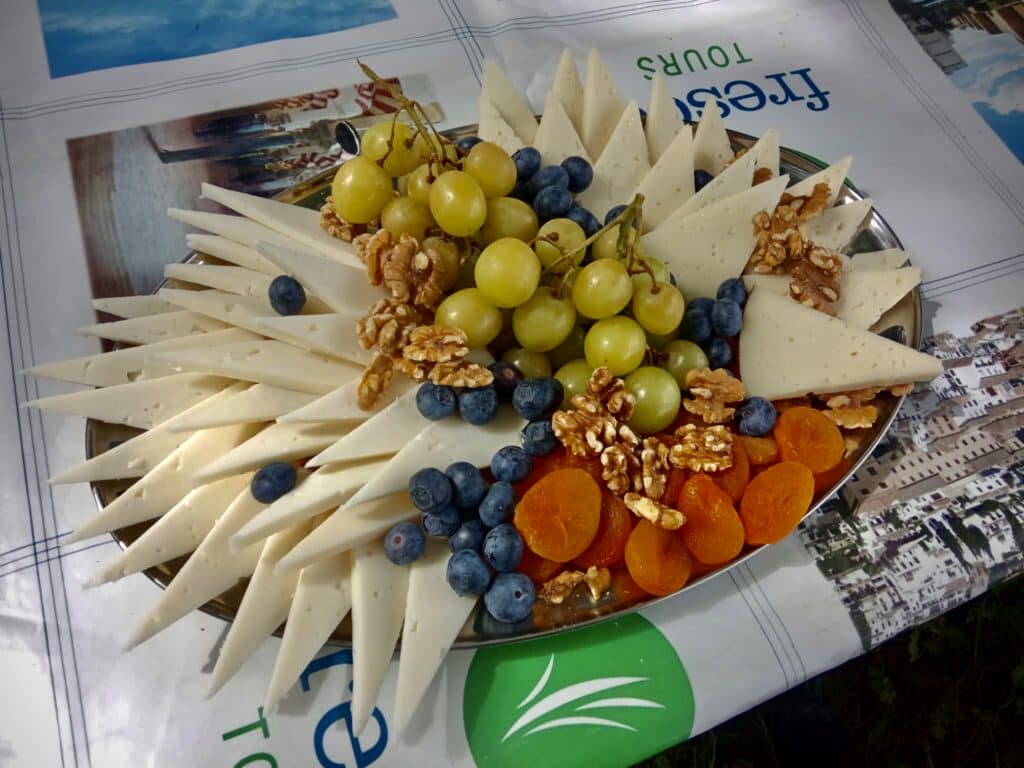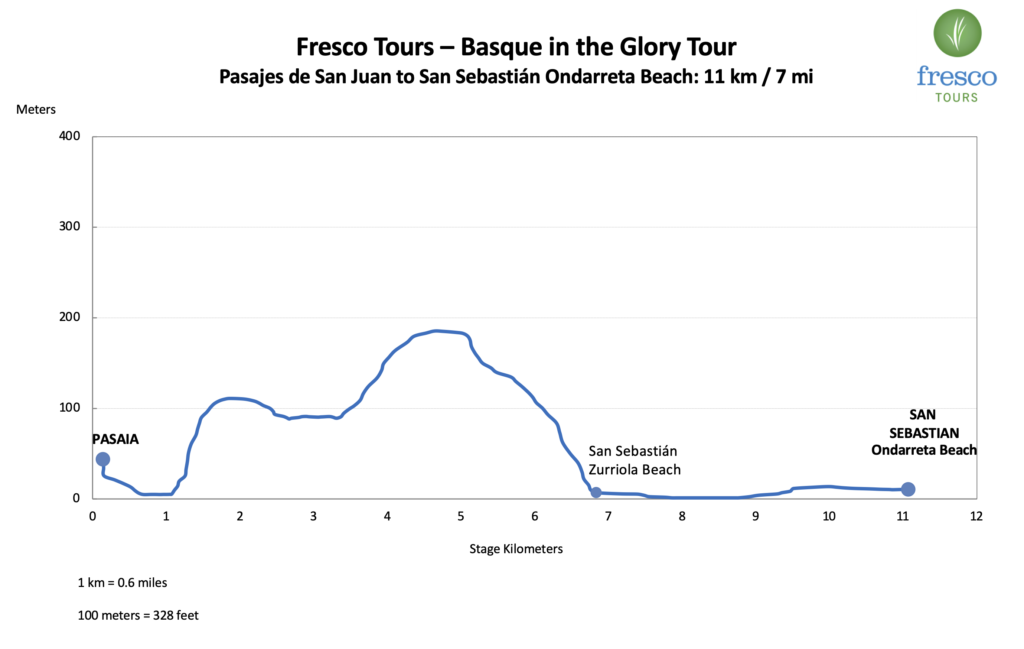This morning we return to Pasajes de San Juan and cross over to San Pedro on the other side of the port like the pilgrims did a thousand years ago – via boat! We then work our way past large caseríos, old stone Basque farm houses, and are soon greeted by the stylish resort town of San Sebastián, a place that has long been popular with the Spanish bourgeoisie. San Sebastian, also known as Donostia in Basque, is a vibrant coastal city known for its picturesque beaches. La Concha Beach, with its crescent shape and crystal-clear waters, is considered one of the most beautiful urban beaches in Europe. Zurriola Beach, on the other hand, is popular among surfers and offers a more youthful and energetic atmosphere. Hurrah! We’ve completed the stage Pasajes San Juan to San Sebastián!
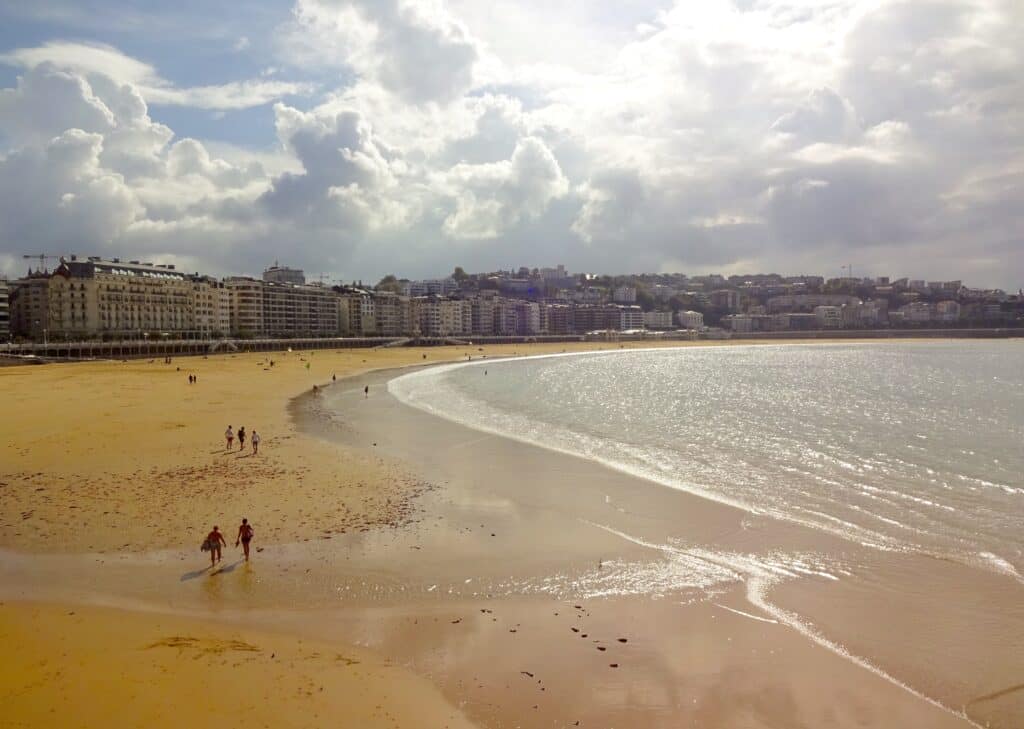
We will stroll on La Concha Beach and enjoy the crashing waves as we continue on to the city’s historic center, which is a maze of narrow streets lined with charming buildings, lively pintxo bars, and boutique shops. It is a vibrant hub of activity, particularly in the evenings when locals and visitors gather to enjoy the city’s renowned gastronomy. San Sebastian is also famous for its culinary scene, which includes a variety of Michelin-starred restaurants, traditional pintxo bars, and gourmet markets. While walking in town we will stop to try some of this famous local food before continuing our walk to the “Peine de Viento” (Wind Comb), a famous sculpture and art installation created by renowned Basque sculptor Eduardo Chillida (see Day 2 on this itinerary). It is situated at the end of Ondarreta Beach, San Sebastian’s third beach.
The sculpture consists of three large steel structures embedded into the rocky coastline. The pieces resemble open comb-like structures that interact with the wind and waves, creating a harmonious dialogue between the natural elements and the artwork. The location offers breathtaking views of the Bay of Biscay and serves as a beautiful backdrop for the sculpture.
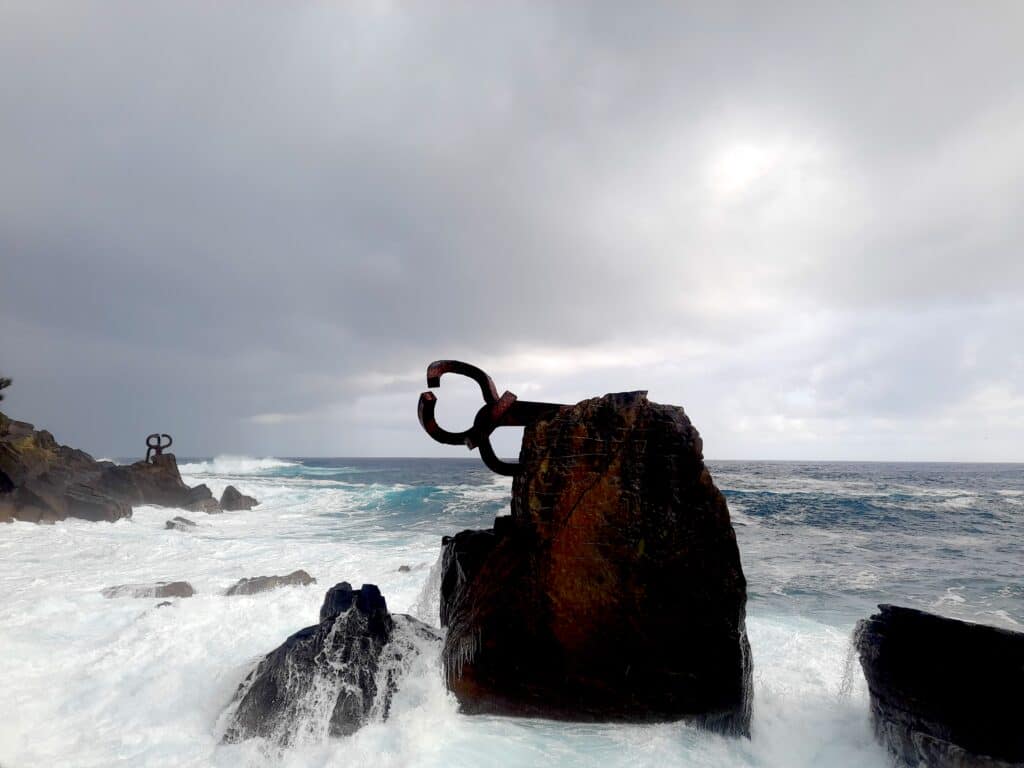
The sculpture has become an emblem of San Sebastian and is often associated with the city’s identity. It is a significant symbol of contemporary art in the Basque Country and has gained international recognition. The Peine de Viento represents the fusion of art, nature, and the maritime character of San Sebastian, making it a perfect end to our day.
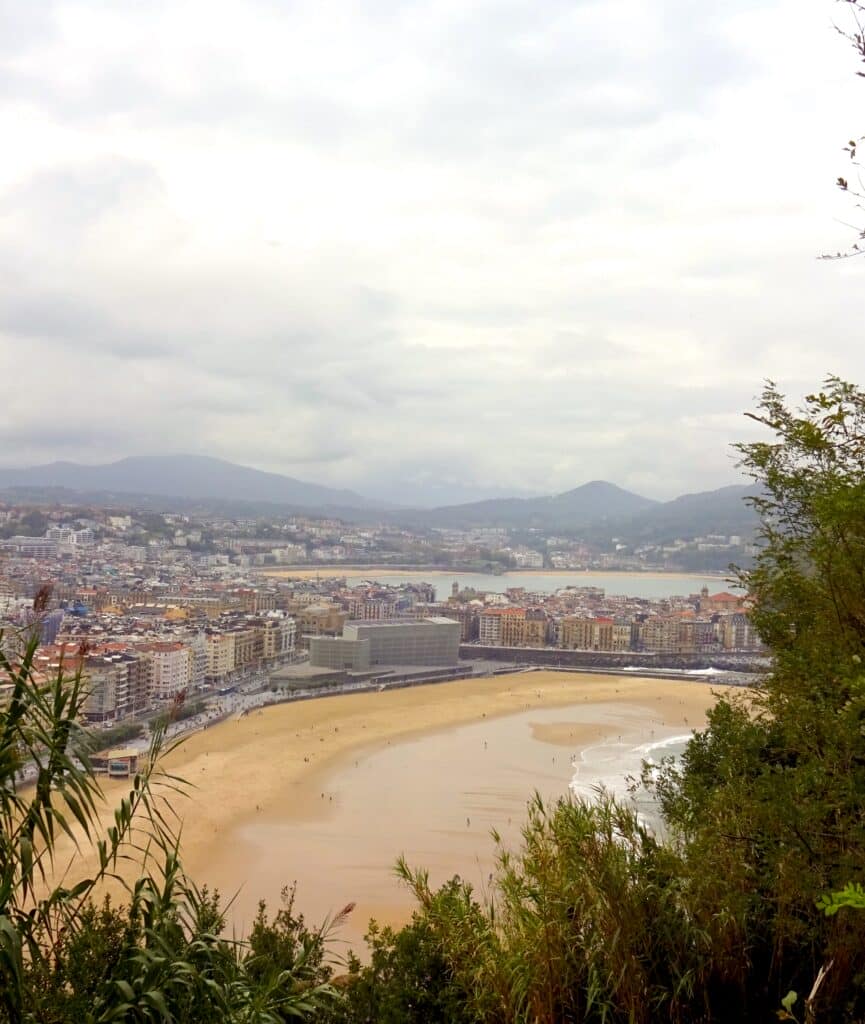
After another day of walking we enjoy dinner with our group before making our way to our accommodations in San Sebastian for the night.
